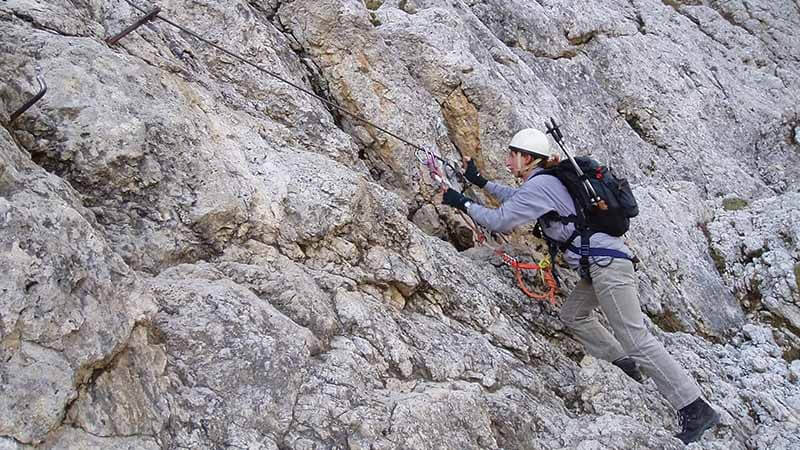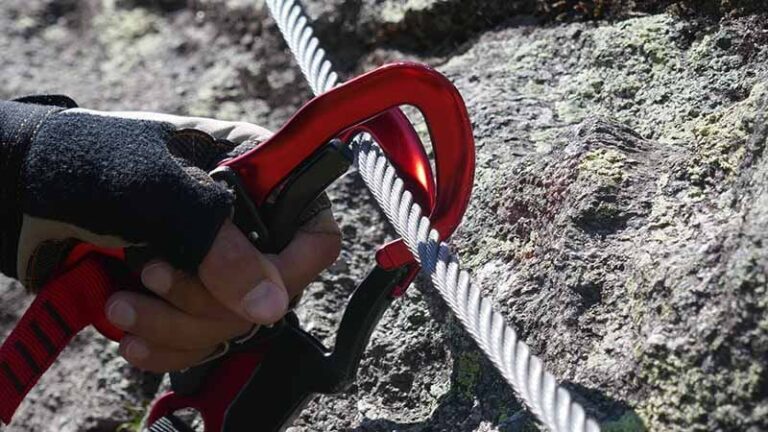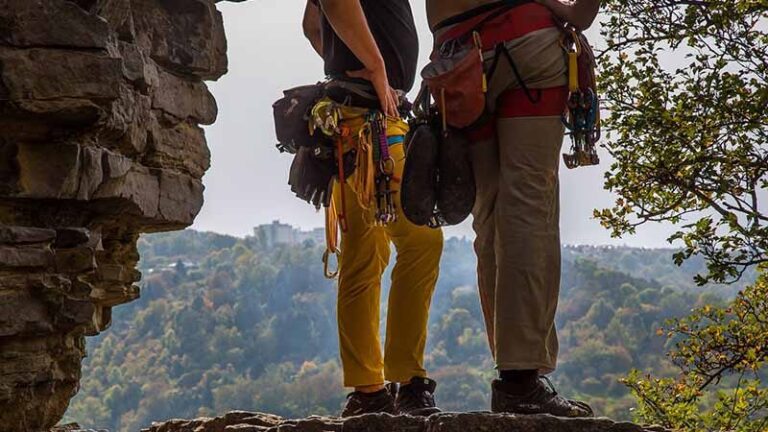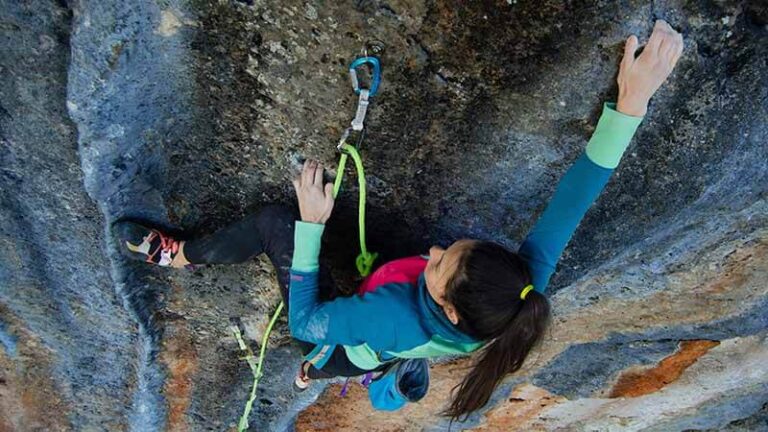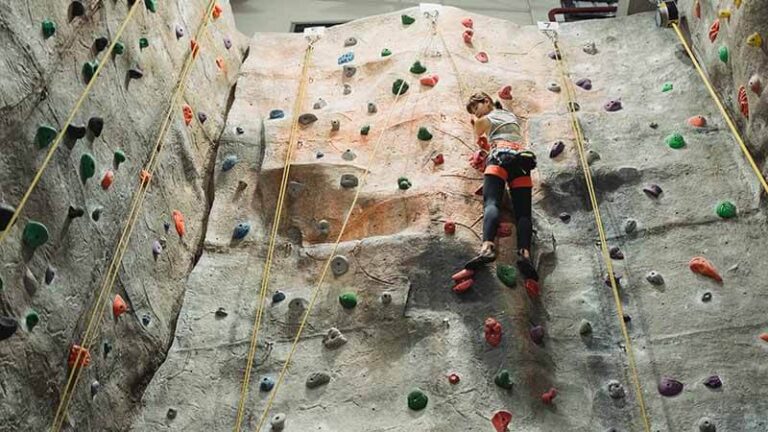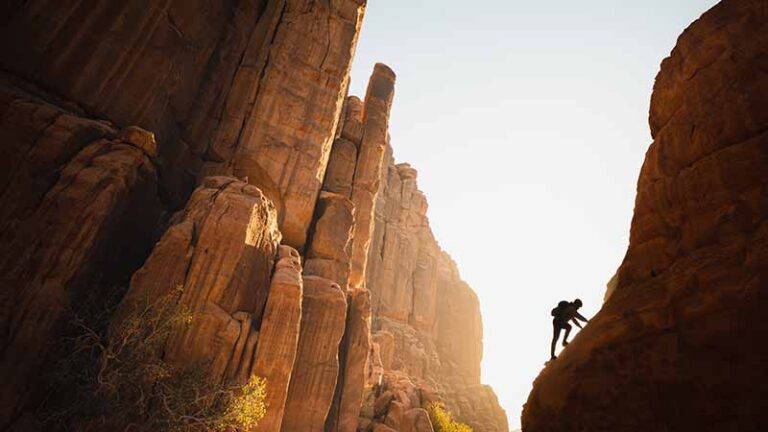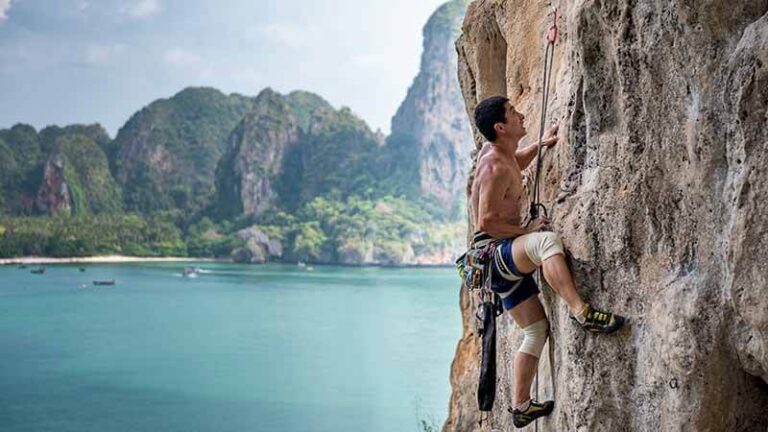Is Rock Climbing Harder for Short People?
When we ask “Is Rock Climbing Harder for Short People,” we’re looking at whether a person’s height influences their ability to rock climb. Climbing rocks is a popular and difficult sport that needs physical strength, mental attention, and technique.
Rock climbing is done by people of different heights and body kinds, although there is a popular misconception that small climbers encounter more difficulties because of their height. This is an interesting topic to investigate since it can help us better understand the mechanics of rock climbing and how body type affects athletic performance.
This blog post will look at the benefits and drawbacks of being short in rock climbing. On the one hand, being short can be advantageous in several elements of the sport. Short climbers, for example, may have an easier time fitting into tight spaces and may be able to maintain balance due to their lower center of gravity. Being short, on the other hand, can provide difficulties in rock climbing.
Short climbers, for example, may struggle to reach certain handholds and footholds and may need to rely on more upper-body strength to compensate. Finally, the debate will center on how small climbers might adjust their skills to overcome height-related problems, as well as advice for all climbers, regardless of height, to improve their performance.
The Mechanics of Rock Climbing
Various techniques involved in rock climbing
Climbers utilize a variety of tactics to ascend a wall or rock face while rock climbing. Among these techniques are:
- Smearing: Traction is gained by pressing the rubber soles of climbing shoes on the granite surface.
- Edging: Using the edges of climbing shoes to secure a footing or ledge.
- Stemming: Maintaining balance when climbing vertically or diagonally by applying opposite pressure with arms and legs.
- Crimping entails gripping little grips with your fingertips and pulling with all of your finger strength.
- Mantling: Using upper body strength, push down on the grip and raise the lower body onto it.
These techniques necessitate a combination of physical strength, coordination, and mental attention, and can differ depending on the type of rock face and path traveled.
How body type affects the climbing ability
Body type can have a big impact on rock climbing ability. Climbers having a higher strength-to-weight ratio (i.e., more muscular mass relative to body weight), for example, may be able to effortlessly pull themselves up the rock face.
Climbers having a lower center of gravity (i.e., those who are shorter or more compact) may also be more steady and balanced on the rock face. However, body type is not the only factor that influences climbing ability; technique, mental focus, and experience are also important.
How height plays a role in rock climbing
Height influences rock climbing skills since it determines a climber’s reach and range of motion. Taller climbers may have an easier time reaching handholds and footholds that shorter climbers cannot reach. Taller climbers, on the other hand, may have difficulty fitting their bodies into tight cracks or gaps and may need to rely on more upper body strength to keep balance on the rock face.
Shorter climbers may struggle to reach certain holds, but their lower center of gravity may allow them to maintain balance more easily. Finally, a climber’s height is only one factor that influences their ability; technique and experience are essential for success in rock climbing regardless of height.
Advantages of Being Short
How being short can be an advantage in rock climbing
Although height can present difficulties in rock climbing, being shorter has advantages. Shorter climbers, for example, may have easier difficulty fitting into tiny gaps or narrow fractures in the rock face.
They may also have a lower center of gravity, allowing them to be more secure and balanced on the rock face. Shorter climbers may also need to depend less on upper body strength and more on technique and body posture, resulting in more efficient and graceful climbing.
Successful short rock climbers
There are many successful rock climbers that are under six feet tall. Ashima Shiraishi, a Japanese-American climber who has been dubbed one of the best climbers in the world, male or female, is one example. Shiraishi is barely 5’1″ tall, but she has accomplished several tough climbs and set world records in bouldering.
Another example is Lynn Hill, a trailblazing climber who was the first person, male or female, to free climb Yosemite’s El Capitan’s Nose route. Hill, who stands 5’2″, used body alignment and technique to complete the ascent. These climbers show that height is not an impediment to success in rock climbing, and that technique and drive can overcome height-related problems.
Challenges of Being Short
Challenges that short climbers face
While being short has advantages in some aspects of rock climbing, it also has drawbacks. Short climbers may have difficulty reaching out of reach handholds or footholds and may need to use more upper body strength to compensate.
Furthermore, certain moves or routes may necessitate longer reaches or greater heights, making them more difficult, if not impossible, for shorter climbers to complete. Furthermore, some climbing competitions may include height-related challenges, which may disadvantage shorter climbers.
How height can limit a climber’s ability
There are numerous examples of how a climber’s skill can be hampered by height. Taller climbers, for example, may have easier difficulty reaching the essential grips or making the jump in some forms of climbing, such as dyno or jump techniques. Furthermore, taller climbers may have a longer reach, allowing them to avoid holdings that shorter climbers would have to use, making the climb more difficult for the shorter climber.
Certain climbing competitions may include moves or obstacles designed specifically for taller competitors, such as long reaches or high holds. While these obstacles can be overcome with practice, technique, and strategy, they can still disadvantage shorter climbers.
Overcoming Height-related Challenges
Techniques that can help short climbers
Short climbers can overcome height-related challenges using a variety of techniques. Using intermediate grips or footholds to generate a sequence of maneuvers that allows for lesser reaches is one strategy. This takes more thinking and planning than simply going for the next obvious hold, but it can be an effective approach to go forward. Another method is to perform more dynamic techniques to attain higher grips, such as jumping or dynoing.
While this requires more explosive power, it can also be an effective way to bridge the gap between out-of-reach holds. Shorter climbers should also focus on refining their technique, such as body placement and footwork, to maximize their effectiveness on the rock face.
How short climbers can adapt their climbing style
Short climbers can tailor their climbing style to their body type by focusing on their strengths and improving their weaknesses. To compensate for their shorter reach, shorter climbers may need to focus more on their feet and body alignment, as well as use intermediate grips and dynamic movements. They can also work on improving their upper body strength to compensate for the extra effort required to reach higher holds.
Short climbers may benefit from practicing on routes designed specifically for their body types, such as those with smaller holds or tighter spaces. Short climbers can overcome height-related challenges and become successful climbers by focusing on their strengths and adapting their technique.
Conclusion
To summarize, rock climbing is a difficult and rewarding sport that demands talent, planning, and determination. While height can be advantageous in certain aspects of climbing, it can also present difficulties for shorter climbers.
Short climbers, on the other hand, can overcome height-related obstacles and become successful climbers by focusing on their strengths, developing their technique, and adapting their climbing style to their body type.

